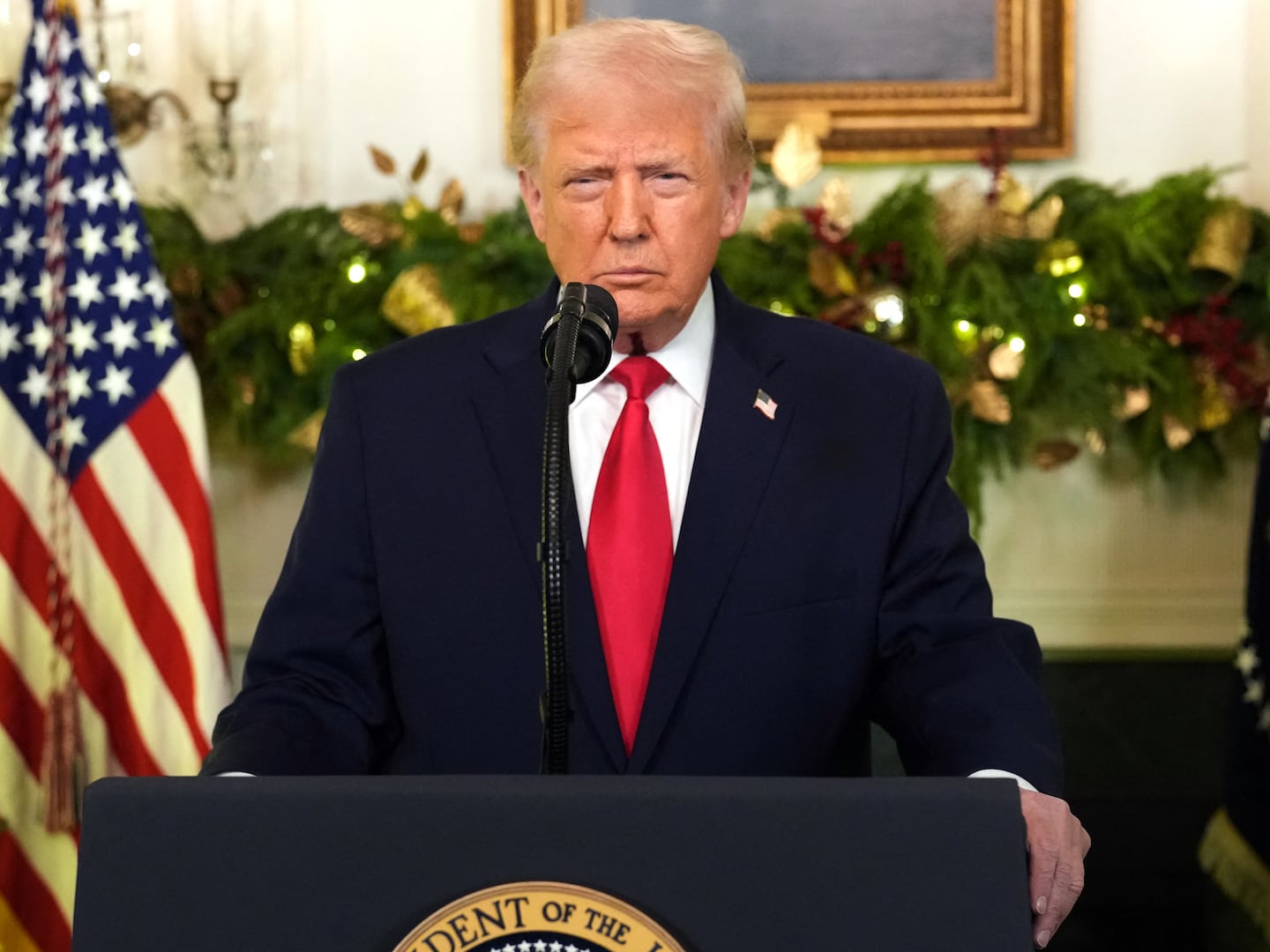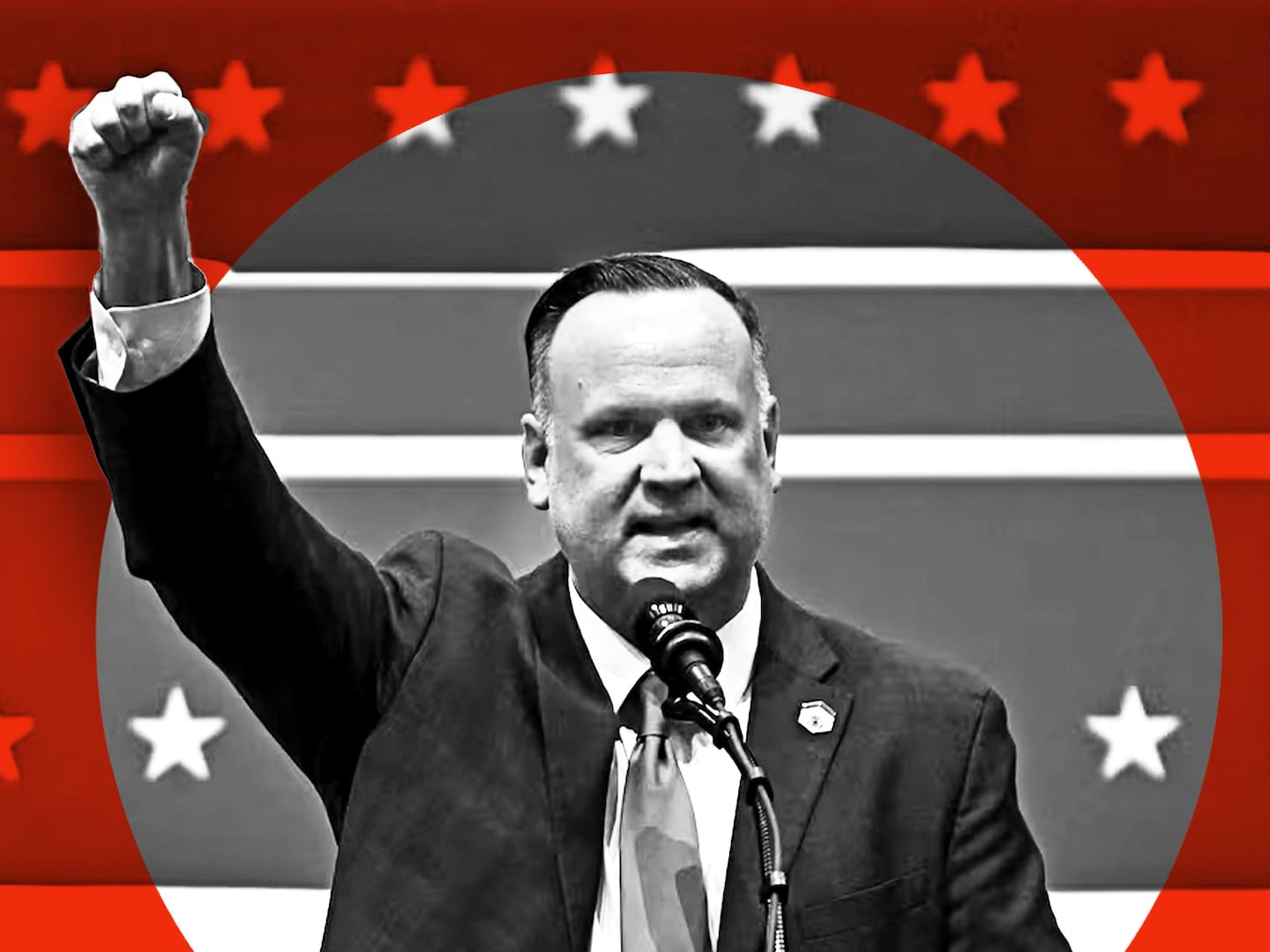Some have turned federal informant. Others are facing prison time. More are named in looming lawsuits. All of them are fighting.
Last summer, the American alt-right was presenting itself as a threatening, unified front, gaining national attention with a deadly rally in Charlottesville, Virginia. The collection of far-right and white nationalist groups proclaimed victory after President Donald Trump hesitated to directly condemn them and instead blamed “both sides” and the “alt left” for the violence. But less than a year after Charlottesville, the alt-right is splintering in dramatic fashion as its leaders turn on each other or quit altogether.
Matthew Heimbach’s arrest in a March trailer park brawl with members of his neo-Nazi group—some of whom he was allegedly screwing—felt like a too-obvious metaphor. Heimbach was the head of the Traditionalist Worker Party, a youth-focused white supremacist group that floated to the front of media coverage and hate rallies in the run-up to Donald Trump’s election.
But by March, Heimbach and the TWP had spent the previous months embroiled in a series of online spats with other alt-right factions. On March 14, police in his Indiana hometown arrested Heimbach after he allegedly assaulted TWP spokesperson Matthew Parrott during a fight over their wives, both of whom Heimbach was allegedly sleeping with. Heimbach’s wife is Parrott’s stepdaughter.
The high-profile bust was an accelerant in what had been a slow-burning feud among the alt-right. Heidi Beirich, director of the Southern Poverty Law Center’s Intelligence Project, said the schism started after Unite the Right, a white supremacist rally in Charlottesville, Virginia, last August. The rally turned deadly after a man affiliated with a white supremacist group plowed a car into a crowd of counterprotesters, killing one and injuring more.
“I think the splintering started there, but I have to say what happened in the last couple weeks has been at a much higher level,” Beirich told The Daily Beast on Wednesday.
Threats from the far-right are by no means over. The SPLC recently released a map documenting 954 hate groups in the U.S., a rise in 20 percent since 2014. In a January report, the Anti-Defamation League found that white supremacists had killed 18 people in 2017.
But the alt-right has had a bad month. In recent weeks, as Beirich described, prominent white supremacist Richard Spencer has dropped a lawsuit against Kent State University and canceled his speaking tour, after anti-fascist protesters opposed him at every stop. “Antifa is winning,” Spencer conceded in a video. Days earlier, Kyle Bristow, an alt-right lawyer who has represented Spencer, announced he was quitting the movement after the Detroit Free Press wrote an article critical of him.
Heimbach was arrested days after Spencer canceled his tour.
“The implosion of the Traditionalist Worker Party, it’s not exactly as though that was planned in some way, but it’s a spectacular implosion of a key player in this universe,” Beirich said of the alt-right’s terrible two weeks.
Even the TWP’s diehards say its prospects are bleak.
“There is no way for us to continue on with the TWP branding after what happened,” Tony Hovater, a TWP leader, wrote on Gab, a social media platform popular among the alt-right. In November, Hovater was the subject of an arguably sympathetic New York Times profile. Now he was on Gab discussing his plans to start a new organization after Heimbach’s arrest, which was “without a doubt a shameful” incident, he wrote. (Journalist Elizabeth King noted on Twitter that the TWP may have rebranded or splintered into something called the Nationalist Initiative.)
“I have no comment,” Parrott, the former TWP spokesperson whose wife allegedly slept with Heimbach, told The Daily Beast on Wednesday. “I am no longer involved in the movement, and I have no stake in all the stupid shit going on in it.”
He’s not the only one headed to the exits over infighting.
Earlier in March—after Bristow quit the movement, but before Spencer canceled his college tour—Heimbach and the TWP acted as a security force for Spencer outside a speech to a handful of people at Michigan State University. They scrapped with counterprotesters, resulting in at least a dozen arrests—including that of Greg Conte, director of operations for an alt-right group, HuffPost reported.
The physical brawl turned into a Twitter feud between Spencer and Patrick Casey, the executive director of white supremacist group Identity Evropa. Identity Evropa participated in the violent clashes at Charlottesville. But after the deadly rally, and two leadership changes (leader Nathan Damigo quit after Charlottesville, and his successor Eli Mosely quit to join a Spencer-affiliated group before it was revealed that Mosely lied about serving in the Iraq War) Identity Evropa promoted Casey to its head and attempted to rebrand itself as clean-cut.
On Twitter, two days after the TWP got in a brawl while acting as Spencer’s security force, Identity Evropa claimed to be “explicitly non-violent” and “peacefully effecting cultural change.” In a press-friendly, but largely meaningless semantic ploy, the group denied being a white supremacist organization.
Spencer interpreted the tweet as an attack. In a tweet of his own, Spencer said he was “baffled and shocked at the behavior” of Casey, and accused him of expelling Identity Evropa members who had supported Spencer during the brawl outside Michigan State University.
The spat was the latest over the alt-right’s “optics,” a divisive subject among the movement. The Unite the Right rally was so toxic for the alt-right’s image that some members started arguing that in-person protests were bad publicity for the cause.
Currently “the biggest divide is between people who believe in online activism versus real-world activism.” Beirich said. After Charlottesville, Daily Stormer founder “Andrew Anglin, for example, posted things criticizing in-real-life protests… When PayPal and Facebook started banning accounts, he was pointing out that ‘these aren’t good things for us, taking to the streets isn’t necessarily positive, the optics were bad.’”
Anglin is currently on the run and claims to be in Cambodia while he attempts to avoid a lawsuit by a Jewish woman whose address and phone number he posted online after she argued with Spencer’s mother. Anglin encouraged readers on his neo-Nazi website The Daily Stormer to call the woman and visit her home, unleashing a campaign of harassment against her.
An opposing alt-right movement accuses people like Anglin of “optics-cucking,” a reference to a porn genre in which a man watches another man have sex with his wife. (The term was in vogue with the alt-right long before Parrott stood on a box outside a trailer to watch Heimbach have sex with Parrott’s wife, according to a police report in the incident.) The anti-optics crowd accuses the pro-optics faction of trying to splinter the movement.
Among the optics-skeptical is Chris Cantwell, a white supremacist who featured prominently in a Vice documentary on the Unite the Right rally, and who later became a meme when he cried on camera. Since Charlottesville, Cantwell has produced a podcast, which ran on The Daily Stormer until Anglin allegedly removed it without telling Cantwell earlier this month.
“As far as I can tell, that’s what’s going on and they’re just throwing barbs back and forth over it,” Beirich said. “I think there’s also a lot of, maybe ‘professional’ is the wrong word, but professional jealousies here. Cantwell’s blog or podcast gets more popular, that pisses off other members of the alt-right who want to be center-stage.”
On Gab, Cantwell alleged a conspiracy.
“I found out that new content was not being syndicated to [The Daily Stormer] when somebody asked about it in my Gab mentions. So I can’t say with any certainty what the motivation was,” Cantwell wrote last week. He suggested that the removal of his show and the flood of negative news about the TWP, in which he is not involved, was part of an effort to discredit the alt-right.
“I smell subversion,” he wrote.
Hovater, the remaining TWP leader who called Heimbach’s arrest “shameful,” shared the post. Cantwell’s attack on The Daily Stormer soon landed him in trouble with other members of the alt-right, when one of the blog’s contributors revealed that Cantwell was an FBI informant.
Andrew Auernheimer, a Daily Stormer contributor and hacker best known by his screen name “Weev,” posted screenshots of a conversation with Cantwell, in which Cantwell admitted to reporting members of Philadelphia ARA (anti-racist action groups) to authorities.
“I talked to cops too. gonna talk to the feds soon most likely,” Cantwell told Weev in the undated conversation, which references Cantwell’s pending felony case for alleged illegal use of tear gas at the Charlottesville rally. “I’m going after Philly ARA. Not throwing our people under the bus. We weren’t the bad guys last August, and Charlottesville is ignoring that fact. The feds want to bust Antifa and I’m keen to help them.”
Weev replied that “if you hadn’t talked to cops and media in the first place and had gotten scarce you wouldn’t be facing 40 years in prison.”
After Weev posted the screenshots, Cantwell confirmed their authenticity in a blog post of his own titled “I Am A Federal Informant,” in which he attacked Weev as “a Jew in a foreign country” in reference to rumors that the neo-Nazi blogger is actually of Jewish ancestry. Cantwell also confirmed that his attorney had spoken with the FBI. The admission set off a fresh volley of criticism from alt-righters who are opposed to communicating with law enforcement.
Cantwell has good reason to try to deflect blame onto anti-fascist protesters. In addition to his pending criminal charges, he is named in two civil lawsuits against Unite the Right rioters. (He is only a defendant in one of the cases.) Between them, the lawsuits also name Spencer, the TWP, Identity Evropa, and the League of the South, the latter of which signed an agreement Monday not to host any future armed protests in Charlottesville.
Beirich said the two lawsuits “will probably drive some other people to abandon the movement. They just don’t want to get caught up in the legal fees.”
In her extensive time tracking the far-right, Beirich has seen other similar movements grow and implode. She drew a parallel between the alt-right and the National Alliance, a neo-Nazi group that, until the early 2000s, “was the biggest neo-Nazi group in America. It was the main player.”
But when the National Alliance’s leader William Pierce died in 2002, the group turned on itself.
“Within a very short period of time, the whole group was essentially decimated. One year after Pierce was dead, that group was done and had splintered into a whole bunch of factions,” Beirich said. “That was the case where a leader died, and I imagine Heimbach’s downfall is almost a death to the Traditionalist Worker Party.”
Under the pressure of lawsuits, jail time, scandal, and shame, she imagines some current alt-righters will simply slink away, if they haven’t already.
“I’m sure we’re going to lose some people and we’re going to have some fighting over the crumbs that are left.”






